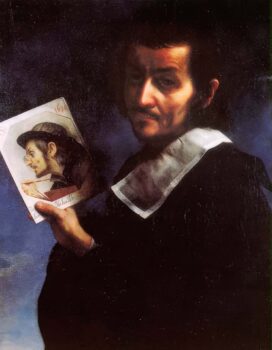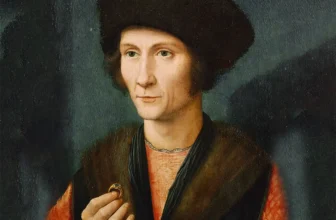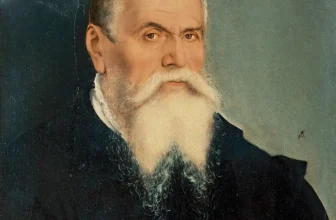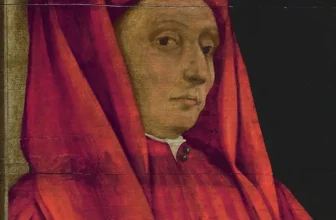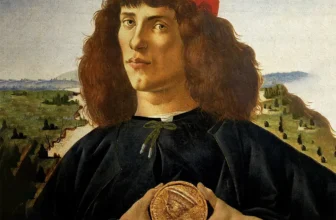Carlo Dolci: The Master of Sacred Realism and the Enduring Value of His Art
Carlo Dolci (1616–1687) was one of the most refined and meticulous painters of the Italian Baroque era. Renowned for his devotional paintings and unmatched technical precision, Dolci’s art represents a bridge between spirituality and visual perfection. His works embody serenity, piety, and astonishing attention to detail, earning him a unique place in art history and the admiration of collectors around the world.
In this article, we’ll explore Carlo Dolci’s life, his most famous artworks, his artistic style, and the present-day value of his paintings. Whether you are an art historian, a collector, or a lover of Baroque art, understanding Dolci’s contribution provides insight into one of the most spiritually charged artistic minds of the seventeenth century.
Early Life and Training of Carlo Dolci
Carlo Dolci was born in Florence, Italy, in 1616. Florence at that time was a city rich with artistic heritage, still basking in the afterglow of the Renaissance. From a very young age, Dolci exhibited an extraordinary aptitude for drawing and painting. Recognizing his talent, his widowed mother arranged for him to apprentice under Jacopo Vignali, a respected painter who was part of the Florentine school.
Vignali’s influence introduced Dolci to the dramatic lighting and expressive realism characteristic of the Baroque period. However, Dolci’s temperament inclined him toward quiet contemplation rather than dramatic theatricality. From early on, he favored delicate religious subjects and an almost miniature-like attention to fine detail.
By his teens, Dolci was already producing works that drew attention for their exquisite beauty and meditative quality. His art was soon sought by Florence’s elite patrons, including the powerful Medici family, who would support his career for decades.
The Artistic Style of Carlo Dolci
Carlo Dolci’s style is distinct within the Baroque movement. While his contemporaries such as Caravaggio and Artemisia Gentileschi emphasized dramatic contrasts of light and shadow, Dolci preferred soft luminosity, meticulous finish, and deep emotional reverence.
Key features of Dolci’s art include:
Hyperrealistic detail: Every fabric, jewel, and hair strand is rendered with astonishing accuracy.
Spiritual intensity: His figures often gaze heavenward or are immersed in prayer, conveying profound devotion.
Polished technique: Dolci’s surfaces are smooth and flawless, showing countless hours of labor.
Vibrant but controlled color palette: He used rich blues, delicate flesh tones, and radiant whites to evoke purity and sanctity.
Dolci’s goal was not to dazzle but to inspire spiritual contemplation. His paintings were often intended for private devotion rather than public altarpieces, which made them especially popular among the devout aristocracy of Florence.
Carlo Dolci’s Most Famous Artwork: “The Adoration of the Magi” and Other Masterpieces
Carlo Dolci’s oeuvre includes numerous masterpieces, but a few stand out as defining achievements of his artistic vision. Among these, “The Adoration of the Magi” is widely considered one of his most famous and exemplary works.
The Adoration of the Magi
“The Adoration of the Magi” exemplifies Dolci’s extraordinary ability to combine realism with spiritual transcendence. Painted around 1652, the work depicts the biblical scene of the Three Wise Men offering gifts to the infant Christ. What sets Dolci’s interpretation apart is not grandeur but intimacy , the quiet tenderness between Mary and the Christ child, the reverent humility of the Magi, and the luminous glow that seems to emanate from within the painting.
The faces in the painting are rendered with lifelike precision, their expressions filled with awe and devotion. The fabrics shimmer with soft highlights, and the overall harmony of the composition reflects Dolci’s disciplined craftsmanship. The work encapsulates the core of Dolci’s approach: perfection in execution, harmony in design, and sanctity in emotion.
Today, “The Adoration of the Magi” is admired as a quintessential Baroque devotional masterpiece. It demonstrates Dolci’s capacity to infuse sacred subjects with quiet, profound spirituality rather than dramatic spectacle.
Other Notable Works by Carlo Dolci
Although “The Adoration of the Magi” is his most celebrated painting, several other works reveal the depth and consistency of his genius:
1. St. Catherine of Siena
One of Dolci’s most reproduced paintings, St. Catherine of Siena shows the saint absorbed in prayer, with her face illuminated by divine light. The tenderness and serenity of her expression have made this painting a symbol of mystic devotion. The original is held in the Uffizi Gallery in Florence, where it continues to draw crowds for its spiritual magnetism and meticulous execution.
2. Salvator Mundi (The Savior of the World)
Dolci’s Salvator Mundi presents Christ holding a crystal orb, a representation of his dominion over the world. The work demonstrates Dolci’s incredible finesse , every reflection on the orb and every curl of Christ’s hair is painted with painstaking precision. This theme, later famously reinterpreted by Leonardo da Vinci, shows Dolci’s alignment with spiritual themes central to Renaissance and Baroque faith.
3. Madonna and Child
Dolci’s various versions of the Madonna and Child express motherly tenderness and divine purity. These paintings are characterized by soft modeling of the flesh, luminous halos, and delicate garments , all hallmarks of Dolci’s gentle realism.
4. The Penitent Magdalene
This painting captures Mary Magdalene in a moment of deep repentance, her eyes brimming with tears. Dolci’s use of texture in this work , the smooth skin, the soft hair, and the rough stone , is masterful. The emotion is palpable but never exaggerated, showing his mastery of balance between realism and spiritual grace.
5. Portrait of the Artist’s Daughter
In addition to religious subjects, Dolci occasionally painted portraits. One of the most touching is the Portrait of the Artist’s Daughter (Agnese Dolci), who herself became a painter. The painting reflects fatherly affection and personal pride, rendered with the same loving attention as his sacred works.
The Spiritual Philosophy Behind Dolci’s Art
Carlo Dolci viewed painting as a form of prayer. Historical accounts reveal that he often prayed before beginning a work and sometimes spent weeks perfecting tiny details. His artistic process was deeply tied to his moral and religious convictions.
Unlike many of his contemporaries who sought fame or royal commissions, Dolci was known for his humility and devout lifestyle. He believed that art should elevate the soul, not simply please the eye. Because of this, he refused to paint subjects he considered profane or morally questionable.
This spiritual rigor made Dolci’s art unique in an era often defined by opulence and drama. His paintings radiate calmness and introspection , qualities that continue to attract admirers centuries later.
Carlo Dolci’s Influence and Legacy
During his lifetime, Dolci was among the most celebrated painters in Florence. He worked for the Medici court and other prominent Florentine families, producing religious works that adorned private chapels and palaces.
However, after his death in 1687, tastes began to shift. The eighteenth and nineteenth centuries favored broader brushwork and more dynamic compositions, leaving Dolci’s precise technique temporarily undervalued. Critics in the Romantic era sometimes dismissed his style as overly sentimental or meticulous.
It wasn’t until the twentieth century that Dolci’s reputation was revived. Art historians began to appreciate the technical perfection and spiritual sincerity of his paintings. Today, Carlo Dolci is recognized as one of the greatest religious painters of the Baroque period and a master of devotional realism.
The Value of Carlo Dolci’s Art Today
One of the most frequently asked questions among collectors and enthusiasts is: What is the value of Carlo Dolci’s art today?
The answer depends on several factors, including the work’s authenticity, subject matter, condition, and provenance. Dolci’s works are relatively rare because he painted slowly and carefully, producing only a limited number of paintings in his lifetime. This scarcity makes his authentic works particularly valuable in the modern art market.
Auction Records and Market Value
In recent years, Carlo Dolci’s paintings have sold for hundreds of thousands to several million dollars at major auction houses such as Sotheby’s and Christie’s. For instance:
A version of Saint Catherine of Siena sold for over $1.5 million USD at auction, reflecting the enduring demand for his religious subjects.
Smaller devotional paintings and portraits attributed to Dolci or his workshop typically range between $200,000 and $800,000 USD, depending on condition and provenance.
Rare, large-scale, museum-quality works can reach $2 million or more.
These prices demonstrate that collectors continue to value Dolci’s craftsmanship, spiritual content, and historical importance.
Factors Affecting Value
Authenticity: Because Dolci’s workshop and followers produced copies of his works, verified provenance is essential. Authenticated originals command premium prices.
Condition: Given the age of his paintings, restoration and conservation status significantly influence market value.
Subject Matter: Religious subjects such as the Virgin Mary, Christ, or saints tend to fetch higher prices than secular portraits.
Museum Provenance: Paintings with documented exhibition history or prior ownership by prominent collections tend to appreciate more.
Aesthetic Appeal: Collectors are drawn to Dolci’s serene compositions and lifelike precision, which remain visually captivating even in modern settings.
Comparison to Contemporaries
Compared to other Baroque painters, Dolci’s works occupy a unique niche. While not as frequently encountered as those of Rubens or Caravaggio, they appeal to a distinct audience that values spiritual intimacy and technical mastery over dramatic flair. This selectiveness contributes to both the rarity and prestige associated with owning a Dolci.
Carlo Dolci in Museums and Collections
Today, Dolci’s paintings are treasured by major museums and institutions worldwide, affirming his historical and cultural importance. Some notable locations where his works can be found include:
Uffizi Gallery, Florence – Home to St. Catherine of Siena and several other masterpieces.
National Gallery, London – Houses Salvator Mundi and other devotional works.
Palatine Gallery, Florence – Contains portraits and religious subjects from Dolci’s later years.
Gemäldegalerie, Berlin – Displays The Penitent Magdalene and other examples of his serene Baroque style.
Los Angeles County Museum of Art (LACMA) – Exhibits Dolci’s Madonna and Child.
These institutions have helped reintroduce Dolci’s art to global audiences, ensuring that his devotional vision continues to inspire both scholars and modern viewers.
Why Carlo Dolci’s Art Remains Valuable Today
The enduring appeal and value of Carlo Dolci’s art go far beyond monetary worth. His paintings continue to captivate for several key reasons:
Spiritual Resonance: In an age dominated by speed and spectacle, Dolci’s meditative art offers stillness and introspection.
Technical Brilliance: His meticulous brushwork and glowing color harmonies are benchmarks of precision few artists have matched.
Historical Importance: As one of the last great representatives of the Florentine school, Dolci connects the High Renaissance tradition with Baroque sensitivity.
Rarity: Because he painted slowly and selectively, each of his surviving works is a prized masterpiece.
Timeless Beauty: His art transcends centuries, continuing to move viewers emotionally and spiritually.
For these reasons, both art collectors and museums consider Dolci’s works to be long-term cultural investments with enduring aesthetic and financial value.
Carlo Dolci’s Enduring Legacy
Carlo Dolci remains one of the most compelling figures in seventeenth-century art. His life and works embody the intersection of faith, discipline, and perfectionism. Through paintings such as The Adoration of the Magi, St. Catherine of Siena, and Salvator Mundi, he expressed a vision of sacred beauty that continues to resonate across time.
In today’s art market, the value of Carlo Dolci’s paintings reflects not just their rarity but their profound emotional and spiritual impact. His art invites viewers into a contemplative world where technical mastery meets divine inspiration. More than three centuries after his death, Carlo Dolci stands as a symbol of what happens when devotion and artistry unite , the creation of timeless masterpieces that speak to both the soul and the senses.
